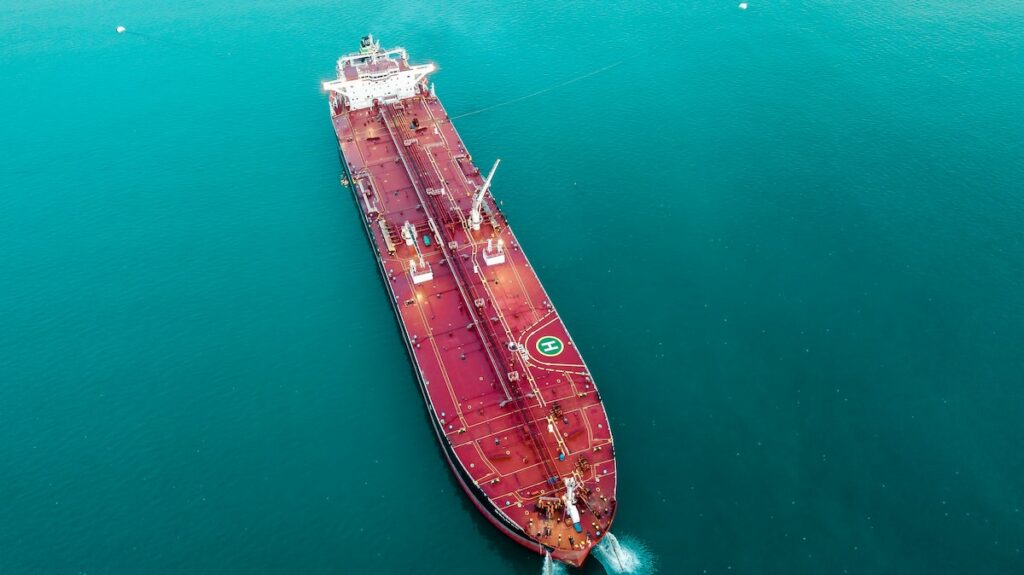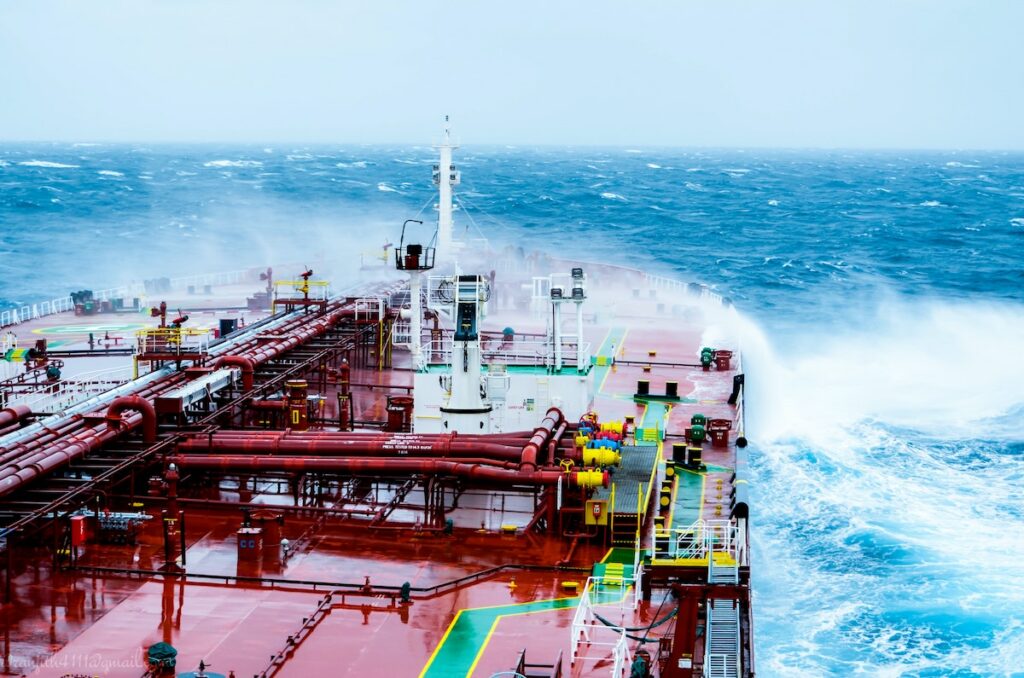Ultra large crude carriers (ULCC) are some of the largest ships in the world, designed to transport massive amounts of crude oil across the oceans. These vessels are typically between 320,000 and 550,000 deadweight tons (DWT) and can carry up to 4 million barrels of crude oil. ULCCs are often used to transport oil from the Middle East to other parts of the world, such as Asia or Europe.
ULCCs are designed with a double hull to reduce the risk of oil spills in case of an accident. They also have sophisticated navigation and communication systems to ensure safe operation. Due to their size and weight, ULCCs require a deep draft and are only able to dock at certain ports around the world.

Despite their large size, ULCCs have faced criticism for their impact on the environment. These ships consume large amounts of fuel and emit significant amounts of greenhouse gases. Some countries have implemented regulations to reduce the use of ULCCs and encourage the use of smaller, more fuel-efficient vessels.
Overview of ULCC
An Ultra Large Crude Carrier (ULCC) is a type of massive cargo ship used for transporting crude oil. These motor tankers (MT as ship prefix) are among the largest ships in the world, with a length of up to 458 meters (1,503 feet) and a deadweight tonnage of up to 550,000. ULCCs are designed to carry large quantities of oil over long distances, typically from oil-producing countries in the Middle East to refineries in Asia or Europe.
ULCCs are built with double hulls to prevent oil spills in case of an accident, and they are equipped with advanced navigation and communication systems to ensure safe and efficient operation. Due to their size and weight, ULCCs require deepwater ports and specialized facilities for loading and unloading.
Despite their efficiency and capacity, ULCCs have faced criticism for their environmental impact. The large amount of fuel required to power these vessels contributes to air pollution and greenhouse gas emissions, and the risk of oil spills during transport is a concern for marine ecosystems and coastal communities.
However, ULCCs remain a vital part of the global oil supply chain, and their continued use is likely to be necessary as long as oil remains a major source of energy for the world economy.

Design and Features
Ultra large crude carriers are designed to carry huge quantities of crude oil across the world’s oceans. They are constructed with a double hull to prevent oil spills in case of an accident. The double hull design ensures that even if the outer hull is damaged, the inner hull will remain intact, preventing the oil from leaking into the ocean. ULCCs are also equipped with a number of other safety features, including fire-fighting equipment, life-saving appliances, and navigation aids.
ULCCs oil tankers are among the largest ships in the world, with a length of up to 458 meters and a width of up to 69 meters. They can carry up to 550,000 deadweight tons (DWT) of crude oil, which is equivalent to about 4 million barrels. To put this in perspective, this is enough oil to meet the daily energy needs of over 7 million people.
The design of ULCCs is optimized for the efficient transportation of oil. They are equipped with powerful engines that can propel the ship at speeds of up to 16 knots. The hull is designed to minimize drag and reduce fuel consumption, making the ship more environmentally friendly. Additionally, ULCCs are equipped with advanced navigation systems that allow them to navigate safely in all weather conditions.
Advantages and Disadvantages
Ultra large crude carriers (ULCC) have been in use for several decades, and they have their own set of advantages and disadvantages. In this section, we will discuss some of the key benefits and drawbacks of using ULCCs for crude oil transportation.
Advantages
- Cost-effective: ULCCs are cost-effective for transporting large volumes of crude oil over long distances. They can carry up to 4 million barrels of crude oil, which reduces the transportation cost per barrel.
- Efficient: ULCCs are highly efficient in terms of fuel consumption per unit of cargo. They have a low fuel consumption rate compared to smaller vessels, which makes them an environmentally friendly option.
- Reduced transportation time: ULCCs can transport crude oil from one end of the world to the other in a matter of weeks. This reduces transportation time and ensures that crude oil is available in the market when it is needed.
- Increased safety: ULCCs are designed to withstand harsh weather conditions and rough seas. They have advanced safety features that reduce the risk of accidents and oil spills.
Disadvantages
- Environmental impact: ULCCs have a significant environmental impact due to their large size and fuel consumption. They emit greenhouse gases and other pollutants that contribute to climate change.
- High risk of oil spills: ULCCs carry a large volume of crude oil, which increases the risk of oil spills in case of accidents or natural disasters.
- High capital cost: Building and maintaining ULCCs requires a significant amount of capital investment. This makes them less accessible to smaller companies and countries with limited resources.
- Port limitations: ULCCs require deepwater ports with sufficient infrastructure to accommodate their size. This limits their access to certain regions and countries.
Current Market Trends
The market for Ultra Large Crude Carriers (ULCCs) has been experiencing a few trends lately. Here are some of the most notable ones:
- Increasing demand: Despite the rise of renewable energy sources, the demand for crude oil is still high, especially in developing countries. This has led to an increase in the demand for ULCCs, which are the most cost-effective way to transport large quantities of crude oil.
- Consolidation: In recent years, there has been a consolidation trend in the ULCC market. Many smaller oil tanker owners and shipping companies have merged or been acquired by larger ones, resulting in fewer players in the market.
- Environmental regulations: The shipping industry is facing increasing pressure to reduce its environmental impact. As a result, many ULCC owners are investing in technologies that can reduce emissions and improve fuel efficiency.
Despite these trends, the ULCC market remains highly competitive. Owners are constantly looking for ways to reduce costs and increase efficiency, while at the same time complying with environmental regulations. It will be interesting to see how the market evolves in the coming years.
Conclusion
Ultra Large Crude Carriers are the largest ships in the world and are designed to transport enormous amounts of crude oil across the oceans. These oil tankers have a significant impact on the global oil industry, and their efficiency and capacity are crucial factors in the industry’s success.
With their massive size and advanced technology, ULCCs have revolutionized the transportation of crude oil, making it possible to transport larger amounts of oil in a single voyage. The design and construction of these ships have come a long way, and they continue to evolve to meet the industry’s growing demands for efficiency, safety, and environmental sustainability.
While ULCCs have faced some challenges, such as restrictions on their size and the need for specialized ports, they remain a critical component of the global oil industry. The use of these ships has helped to reduce transportation costs and has made it possible to transport crude oil to markets around the world more efficiently.
Overall, ULCCs are an essential part of the global oil industry and play a crucial role in meeting the world’s energy needs. As the industry continues to evolve and grow, we can expect to see continued advancements in the design and construction of these massive ships, further enhancing their efficiency and sustainability.
- Types of Gas Carriers as per IGC Code – April 22, 2025
- Wind-Assisted Propulsion Systems (WAPS): A Game Changer for Maritime Decarbonization – February 6, 2025
- 10 Boat Salvage Yards in California – January 25, 2025





